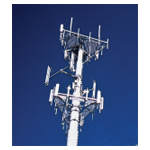 The clock phase of the latest 5G millimeter wave auction, Auction 103, has been completed, raising $7.5 billion so far – about 20% less per license in comparison with what was raised in the clock phase of the previous millimeter wave auction and raising questions about millimeter wave spectrum value.
The clock phase of the latest 5G millimeter wave auction, Auction 103, has been completed, raising $7.5 billion so far – about 20% less per license in comparison with what was raised in the clock phase of the previous millimeter wave auction and raising questions about millimeter wave spectrum value.
Winning bidders in Auction 103 are not yet known, but all four major mobile carriers qualified to bid in the auction, as did about 30 other companies. The mobile carriers are expected to use the spectrum for 5G service, while some other bidders are likely to use the spectrum for fixed wireless service.
Currently, winning bidders have simply been allocated a certain amount of spectrum per license area. In a forthcoming assignment phase, winners will bid for specific frequencies within the spectrum band. Final auction proceeds will increase as a result, but generally, the total proceeds increase only marginally in the assignment phase.
Licenses in Auction 103 are 100 MHz wide and are in the high-frequency 37 GHz, 39 GHz and 47 GHz bands. The licenses were offered by partial economic area (PEA). According to a press release from the FCC, all but two of the 14,144 licenses offered had winning bids.
Millimeter Wave Spectrum Value
Auction 103 is the latest of several millimeter wave auctions that the FCC has conducted.
Auction 102, which included 100-MHz blocks of spectrum by PEA, had raised nearly $2 billion when its clock phase was completed last year. That auction awarded 2,904 licenses in the 24 GHz band.
A comparison suggests carriers’ appetite for millimeter wave spectrum has decreased somewhat since last year, as the average license cost in Auction 103 was about $534,700, compared to a bit less than $688,700 per license in Auction 102.
Auction 101 also involved millimeter wave spectrum, but the results are not comparable as licenses weren’t available nationwide and were issued at the county level. That spectrum is in the 28 GHz band.
Perhaps it’s not surprising that the value of millimeter wave spectrum appears to have dropped somewhat. AT&T and Verizon have considerable millimeter wave spectrum holdings, making Auction 103 spectrum most valuable to only Sprint and T-Mobile.
Some stakeholders have argued that the FCC should be doing more to free up mid-band spectrum, which they see as offering the optimum mixture of coverage and bandwidth for 5G. Millimeter wave spectrum supports the highest speeds, but over relatively short distances, requiring more time and a greater investment to deploy.


